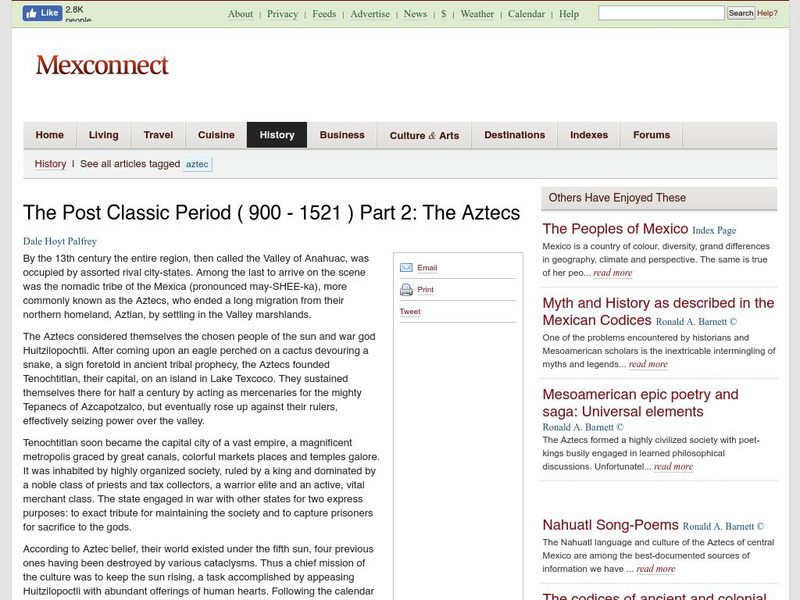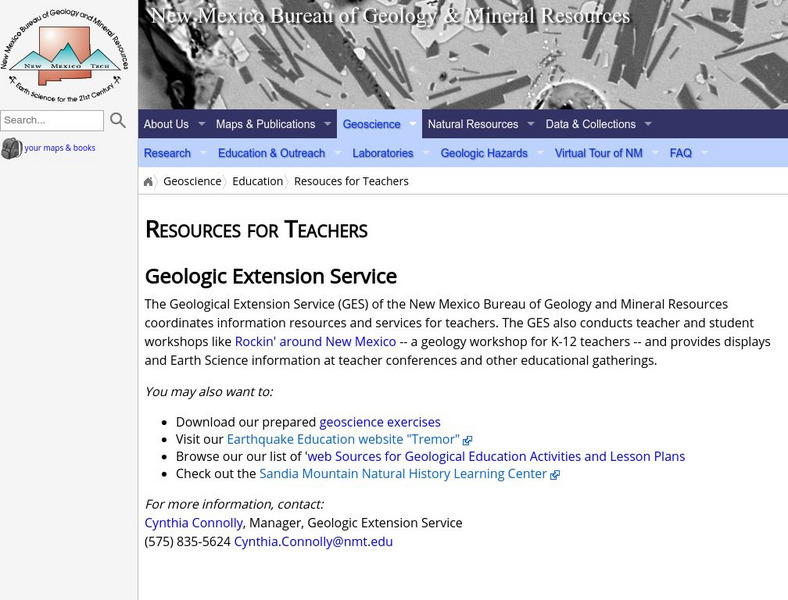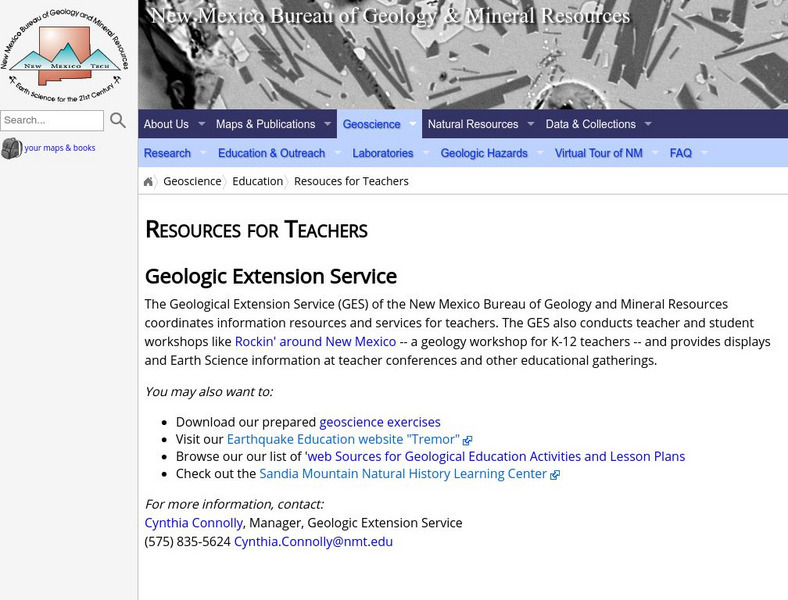National Humanities Center
National Humanities Center: Toolbox Library: Enslaved Peoples, American Beginnings: 1492 1690
Two Spanish accounts of enslaved Indians in the Caribbean and enslaved Africans in Mexico and statements of the difficulty of maintaining slavery and the lurking threat of a slave revolt.
A&E Television
History.com: Day of the Dead: How Ancient Traditions Grew Into a Global Holiday
The Day of the Dead or Dia de Muertos is an ever-evolving holiday that traces its earliest roots to the Aztec people in what is now central Mexico. This article explains Day of the Dead Traditions.
Other
Us Government: Restore the Gulf
Since the oil well has been shut down, attention turns to the restoration of the Gulf with regard to wildlife, the impact on the sea and coastal areas, travel and tourism, filing a claim for damages, and a return to normal life for...
PBS
Pbs: New Perspectives on the West
This in-depth resource presents a history of the American West from pre-Columbian times until World War I with profiles, documents, and images. It encourages visitors to link these into patterns of historical meaning for themselves....
Ducksters
Ducksters: United States Geography for Kids: New Mexico
Kids learn facts and geography about the state of New Mexico including symbols, flag, capital, bodies of water, industry, borders, population, fun facts, GDP, famous people, and major cities.
PBS
The West: Stephen Fuller Austin (1793 1836)
PBS presents a biography on the life of Stephen Fuller Austin. Known as "The Father of Texas," Stephen F. Austin established the first Anglo-American colony in the Teas province of Mexico and saw it grow into an independent republic.
PBS
Pbs: Journey to Planet Earth: On the Brink
A part of the PBS series "Journey to Planet Earth," this section examines "how severe environmental problems can lead to political crises and increased hostilities around the world." Includes video clips and educational resources.
Library of Congress
Loc: Local Legacies
Experience America through its grassroots! Diverse populations lend cultural colorfulness to our country. Read about an International Food Fair in California, Annie Oakley Days in Ohio, and Wabanaki Basketry in Maine. Click on your...
Mex Connect
People and History of Mexico: The Post Classic Period (900 1521 Ad): The Aztecs
Information on the settlement of the Aztec in Tenochtitlan, which soon became the capital city of their empire, their notable religious observations and customs, and the news of the landing of the bearded white men bearing crosses.
Live Science
Live Science: Mexican Culture: Customs & Traditions
Looks at the makeup of Mexico's ethnic tapestry, its languages, religions, the values of its peoples, Mexican food, arts, clothing, and celebrations. [Published Feb. 10, 2015]
Curated OER
Indigenous Peoples' Lit.: Indigenous Nations of Mexico
A listing of the different indigenous groups of people in Mexico. Each group has its own page in which you can find information on their literature, songs, and culture. Additional links to other websites are provided.
Curated OER
Indigenous Peoples' Lit.: Indigenous Nations of Mexico
A listing of the different indigenous groups of people in Mexico. Each group has its own page in which you can find information on their literature, songs, and culture. Additional links to other websites are provided.
AllRefer
All Refer Reference: Population / Ethnicity and Language
A look at the history of population patterns in Mexico and also a look at the two primary ethnic groups: mestizos and Indians.
Curated OER
Miguel Hidalgo, Often Called the Father of Mexico.
A short history of the struggle for Mexican independence from Spain, with special emphasis given to the efforts of Miguel Hidalgo Costilla, who became known as the "father of the Mexican Revolution".
ArtsNow
Arts Now Learning: Exploring Social Studies Through Playwriting [Pdf]
In this lesson plan, 6th graders use photos of people in real-life events from the Zapatistas Movement as a springboard to write a dialogue between the people in the photograph. Students then work in pairs to create a scene that...
Internet History Sourcebooks Project
Fordham University: Modern History Sourcebook: Hernan Cortes
Fordham University gives the text of Cortes' second letter to King Charles V, describing the Aztec capital city, Tenochtitlan, and the people who lived there.
Yale University
Yale New Haven Teachers Institute: The Aztecs: A Pre Columbian History
This site contains several lesson plans, a teacher bibliography, a student reading list, and a large amount of background information on the Aztecs.
Other
Mayan Kids
Explore the history, beliefs, people, and culture of the ancient Maya in this enchanting website. It includes games, clip art, and a glossary of terms.
Khan Academy
Khan Academy: Aztec (Mexica), an Introduction
This article from The British Museum provides a short history of the Mexica (Aztec) peoples and their empire.
Other
Nmbgmr: Resources for Teachers
Locate a variety of maps on New Mexico's minerals and resources, read issues of "Lite Geology," take virtual tours of state sites, and find games, puzzles, and activities for young people.
Other
Nmbgmr: Resources for Teachers
Locate a variety of maps on New Mexico's minerals and resources, read issues of "Lite Geology," take virtual tours of state sites, and find games, puzzles, and activities for young people.
Other
Nmbgmr: Resources for Teachers
Locate a variety of maps on New Mexico's minerals and resources, read issues of "Lite Geology," take virtual tours of state sites, and find games, puzzles, and activities for young people.
Other
Oaxaca's Tourist Guide
Offers fairly detailed information on the history of the state, natural and cultural attractions, indigenous peoples, and tourist services.
ClassFlow
Class Flow: Countries Mexico
[Free Registration/Login Required] This colorful flipchart discusses Mexico - the people, food, and things that it is noted for. It compares the daily lives and customs such as birthdays and religious holidays of children in the United...
















